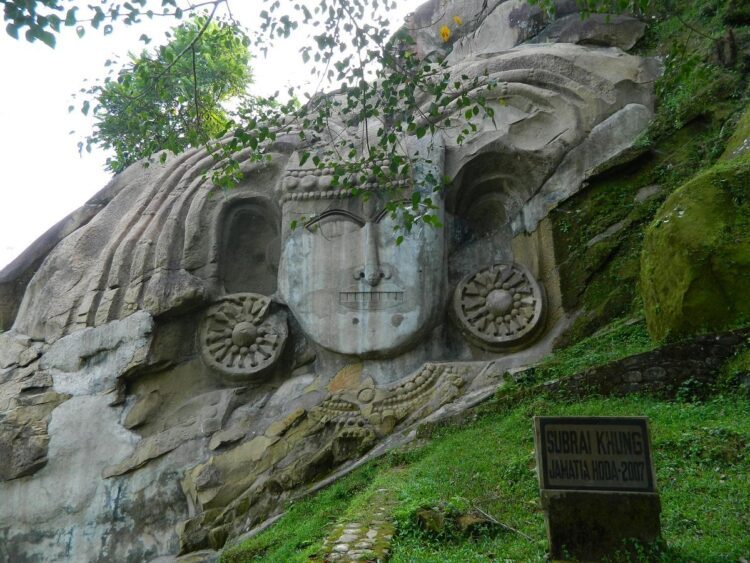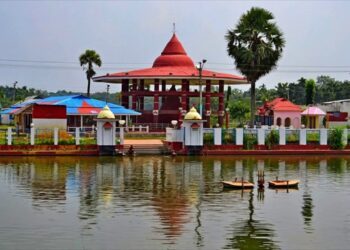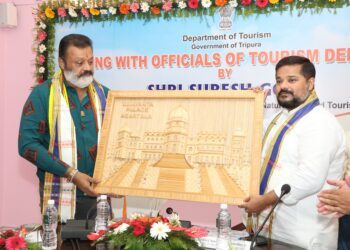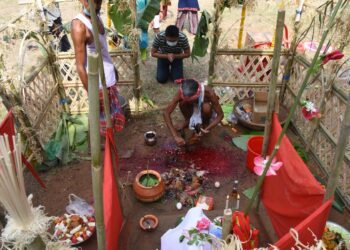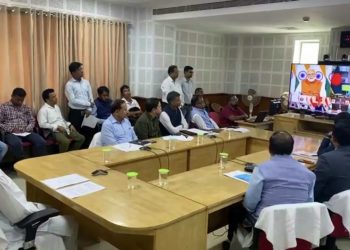Unakoti, translating to “one less than a crore,” is a site shrouded in grandeur and mystery. Nestled in the Jampui Hills of Tripura, India, it is renowned for its giant bas-relief structures carved into rock faces, creating an awe-inspiring heritage site. Unakoti is not just a destination; it is a journey into the heart of legends, history, and unparalleled natural beauty.
Bas-Relief Sculptures: Ancient Art in Stone:
Bas-relief sculptures are images carved at a shallow depth, a technique used extensively in ancient Egypt and other eastern cultures. Unakoti boasts one of the largest collections of these sculptures in India. The intricate carvings, believed to date between the 7th to 13th centuries, are a testament to the rich cultural and artistic heritage of the region.
The Journey Begins: Reaching Unakoti:
Unakoti is approximately 178 km from Agartala, the capital of Tripura, and can be accessed via several routes. Here’s a practical guide to reaching this enigmatic site:
– From Agartala: You can take a bus from Agartala to Dharmanagar or Kailashahar. Shared vehicles or hired cars are available from these towns to Unakoti.
– By Train: Tripura is well-connected by rail. You can take a train from Agartala to either Dharmanagar or Kumarghat. Kailashahar is closer to Kumarghat, and from either of these stations, you can hire a vehicle to Unakoti.
– From Silchar, Assam: If travelling from Assam, you can board a train towards Agartala and alight at Dharmanagar. From Dharmanagar, you can hire a car to Unakoti.
Accommodation: Where to Stay:
– Kailashahar: Unakoti Tourist Lodge, managed by the Tripura Government, offers reasonably priced rooms at Rs. 800 for a double-bedded room and Rs. 950 for a deluxe AC room.
– Dharmanagar:There are several hotels and guest houses. Hotel Panchabati offers decent accommodation with rooms priced at Rs. 1200 for an AC double bedded room.
Exploring Unakoti: A Step-by-Step Guide:
Upon arrival at Unakoti, you will be greeted by a huge gate adorned with a face, hinting at the marvels beyond. The site does not have an entry fee, allowing free access to its wonders.
- The Main Attraction: The gigantic face carved into a cliff greets visitors first. Standing almost 30 feet high, the face, often mistaken for the Buddha, mesmerises with its elongated earlobes and intricate headdress.
- Dhaluchhora Stream: This small mountain stream, flowing beside another cliff face with a bas-relief of Ganesha, adds a serene touch to the site. The Ganesha sculpture, with its potbelly and detailed features, is a sight to behold, especially during the monsoon when the waterfall cascades over it.
- Chaaturmukhalinga Kalyansundaramurty: Follow the trail to this statue with sculptures on all four sides. Although not a must-see, it adds to the overall charm of the exploration.
- Unakotishwara Kal Bhairava: This is the most famous bas-relief, depicting Lord Shiva with an elaborate headdress. The 30-feet high image is flanked by figures of goddesses, possibly Ganga and Yamuna.
- Other Sculptures: Further exploration reveals numerous other bas-reliefs, including a warrior-like goddess, possibly Durga, and images of dancing female figures with enigmatic grins. The sculpture of Nandi bull and an inverted face looking skywards add to the mystical ambiance.
Legends and Myths: The Stories of Unakoti:
- When Gods Overslept: According to legend, Lord Shiva, on his way to Kashi with an entourage of one crore gods and goddesses, stopped at Raghunandan Hills for the night. Only Lord Shiva awoke before dawn; the rest were turned to stone, thus forming the rock-cut images.
- The Sculptor’s Challenge:Another tale speaks of Kalu Kamar, a local sculptor tasked by Goddess Parvati to carve one crore sculptures. He completed 99,99,999, but a divine trick prevented him from finishing the last one, giving Unakoti its name.
- Arrogance and Downfall: In a variation, Kalu Kamar, filled with arrogance, sculpted his image as the final one, leading to divine retribution and the name Unakoti.
- The Legend of Subrai Khung: Local Tripuri legend narrates how King Hamtorfa prayed to Lord Shiva to reside in his kingdom. Shiva instructed him to create statues of all gods and goddesses, except Ganga, who sent the Gomti River instead. The king was left with one less than a crore statues.
Practical Tips for Visiting Unakoti:
Footwear: Wear comfortable shoes suitable for walking and climbing stairs.
Clothing: Light, comfortable clothing is recommended.
– Timing: Visit early or in the late afternoon for better lighting for photography.
– Hydration: Carry a water bottle, as there are limited shops near the site.
– Refreshments: A small tea shop is available, but it’s advisable to carry snacks.
Conclusion: The Unakoti Experience:
Unakoti is a treasure trove of history, art, and mythology. Its bas-relief sculptures, set amidst the lush greenery of the Jampui Hills, create an ethereal experience. Despite the challenging roads, the journey to Unakoti is worth every bit of effort, offering a glimpse into the ancient and the divine. As efforts to secure World Heritage status continue, Unakoti stands as a testament to the timeless allure of India’s cultural heritage.


